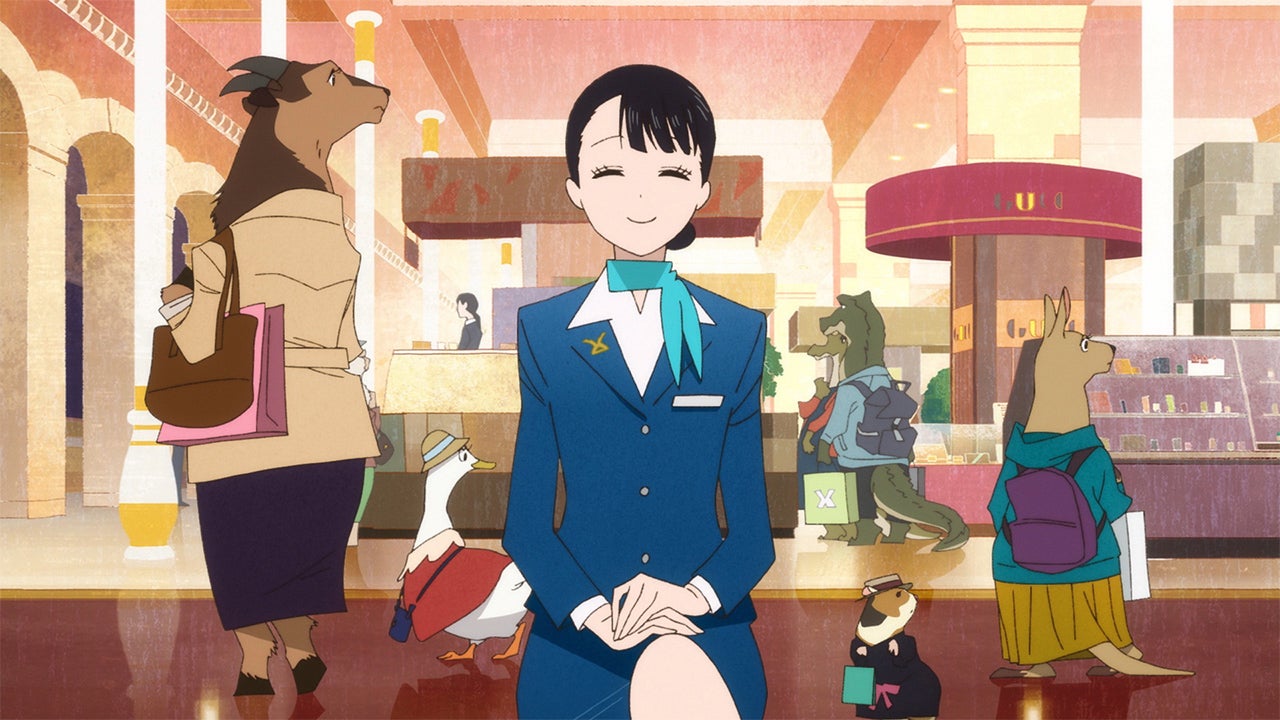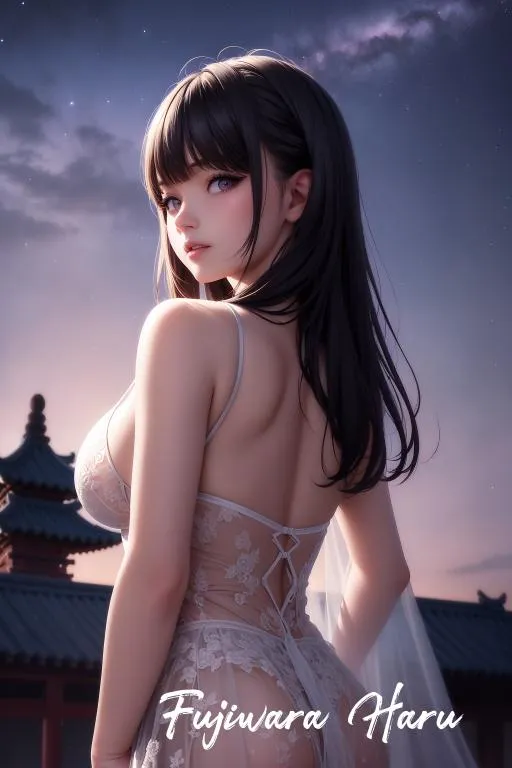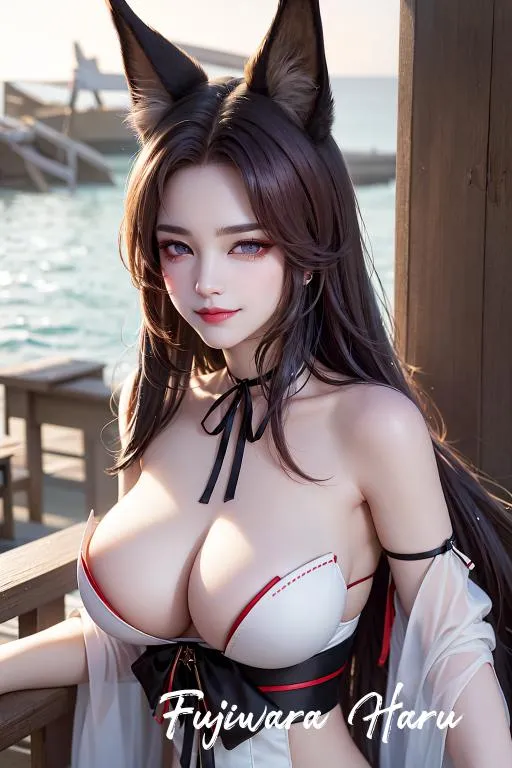Crunchyroll and Sony Pictures Entertainment will release The Concierge in U.S. theaters in 2024.
In Tsuchika Nishimura’s manga The Concierge at Hokkyoku Department Store, the titular shopping center and its accommodating staff cater to a clientele of anthropomorphic animals. Production I.G.’s anime adaptation, The Concierge, may be brief in comparison to the comic’s nearly two-year serialized run, but it turns out to be a funny and handsomely produced translation of Nishimura’s whimsical premise. It’s also a poignant reflection on what places like Hokkyoku represent: monuments to the allure, joy, and damage of commerce.
The film, like the manga, centers on Akino, a Hokkyoku employee who stumbled upon the store as a child and became fascinated with the concierge who found her. Now an adult, Akino works at the very same store in the very same role, in service of “VIAs,” or Very Important Animals. (Her role as “concierge” in this context essentially being that of a sales assistant, receptionist, personal shopper, and sometimes troubleshooter.) Her workplace is The Concierge’s sole setting, but it feels surprisingly expansive on screen, like a hidden world unto itself that’s revealed piece by piece in charming vignettes.
Akino’s training forms the arc of The Concierge’s brief and breezy plot. She puts out various (metaphorical) fires and earnestly tries to help the creatures flocking to the high-end emporium, all under the scrutiny of the floor manager (a fellow human), the boss (a penguin), and a consultant looking to weed out inefficient staff. Akino is a bit less assured and elegant as a result, stumbling into customers and even stepping on one of the smaller ones, a great auk, by accident. The Concierge’s playfulness becomes apparent here: The bird cordially asks Akino – her rehearsed yet frantic reaction captured in the animation – to give him a push so he can continue sliding along the store’s aisles.
In the wonderfully expressionist illustrations of director Yoshimi Itazu and crew, The Concierge takes on a somewhat modernist appearance. The shapes of the human characters combined with the flattened coloring and absurd sense of humor recall Masaaki Yuasa’s The Tatami Galaxy and Night is Short, Walk on Girl. A collision of quirky designs, with some intentionally simplified drawings (Akino’s shoes are usually just triangles) and shading lends the film a lovely, gently stylized quality. It’s a mishmash of different influences; one chef looks like he stepped out of a Tintin comic. The stylish costumes of Chie Morita’s character designs add to the adorable delights: a movie-star sea mink dons a wide-brimmed hat while a seal tries on a globetrotting array of traditional dresses.
It’s delightful just watching these characters move, like a sequence where Akino barrels into view as she tries to mediate between a father and daughter, there on separate trips, buying the wrong presents for each other. She charges through at lightning speed, overtaking the frame as she sweats over convincing the customers of the better choice. The range of animals that she serves in the halls of the department store also have lovely idiosyncrasies to their movements, which Itazu contrasts against the refinement of their human clothing.
Itazu pushes deeper into absurd comedy with the overbearing Mr. Todo, who surveys productivity in the store from within its walls. Todo’s lightning-bolt-shaped mustache and jagged appearance set him apart from the more gentle, swooping lines with which Akino is drawn. His demonic appearance accentuates sight gags that have him emerging from paintings, coat racks, and even a vat of soup to dole out stern advice to the rookie concierge.
The store itself is just as thoughtfully rendered: the wrinkled textures of the various backgrounds shaped by white lines, the buildings awash with warm pastel tones. The exterior recalls The Grand Budapest Hotel; the influence of that ornate Wes Anderson comedy can also be felt in imitations of the director’s signature symmetrical compositions and The Concierge’s portrayal of staff who have a rather passionate and poetic perspective on the hospitality business.
Itazu and screenwriter Satomi Ooshima have a lot of fun with their premise, but gradually Akino’s idealism brushes up against problems that can’t be solved by kindness and sincerity alone. Aseal takes advantage of her generosity, and spouts off the kind of insufferable, entitled rhetoric that will be all too familiar to service workers in the real world. A lot of The Concierge’s conflicts are expectedly human – and when mixed with dilemmas unique to the animal kingdom, they reveal the somber truth masked by Hokkyoku’s romantically depicted halls.
It happens in pieces. “There are no other Japanese wolves around” notes one lonely customer, a real-life story of extinction cleverly folded into one of the storylines that make up Akino’s time as a concierge-in-training. This eventually blossoms into The Concierge’s central thesis, the thread uniting not only the Hokkyoku’s clientele but also the character traits Akino displays in serving them. The environmentalist message – and the realization that everyone who comes to the store is a member of a disappeared or disappearing species – gives thematic shape to Akino’s run-ins with talking animals. Her pride in service becomes a reflection on human decadence; the department store a reflection on our destructive appetites.
That combination of enchanting myth and stark reality turns The Concierge from a flighty, funny fantasy into something a little more tragic and poignant. Its point about the link between capitalism and extinction is didactic, yet powerful – a consideration of how we could better serve our neighbors on planet Earth. (I hope that someone shows this movie to David Attenborough.) It’s to Itazu’s credit that this turn fits so naturally, neither compromising the light tone nor feeling too preachy. The contradictions at the heart of Hokkyoku lend it a bittersweet quality, but The Concierge is a delight from beginning to end.








